

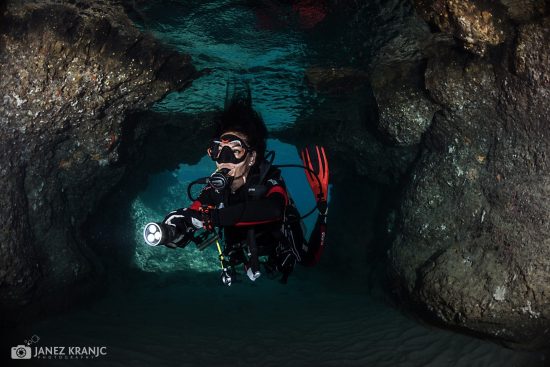
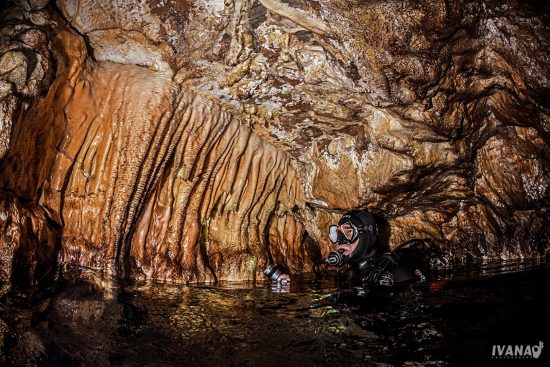
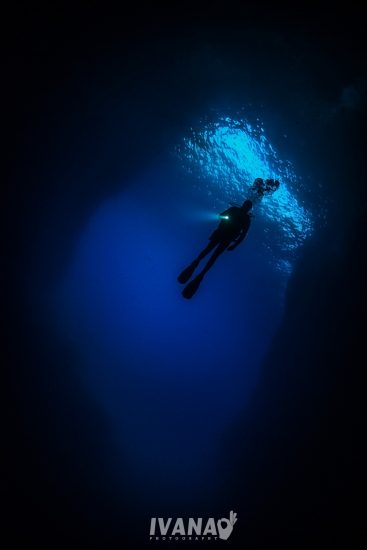
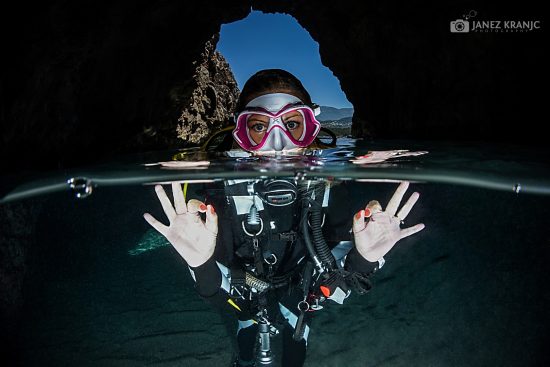
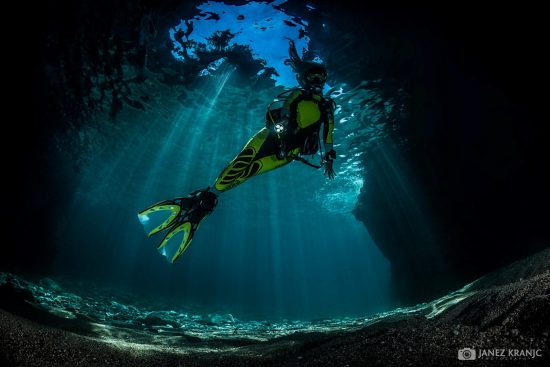
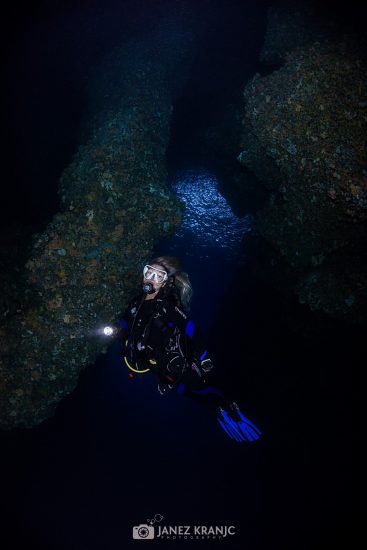
I am certain there is not a single scuba diver that has never been drawn to the dark, hidden places which appear while diving; especially when we do not expect them, the darkness of a cavern.
Caverns are cavities which originate from the erosive effect that waves have on the coastline. They can be so small that one diver can barely fit inside or as big as an underwater concert hall. Nevertheless, to fulfil the definition of a cavern, a cavity must have an entrance which is visible at all times. Otherwise, it is a cave.
Caverns can often be seen from the surface, but sometimes only a shadow underwater signifies their presence. The air-filled spaces often found inside them are called syphons. This is also the place where sea and freshwater meet and form a layer of brackish water. Diving through that layer can be tricky as the visibility is low. However, once you reach the fresh water which fills the syphon, it is entirely translucent, almost like air. Unfortunately, this comes at a price, as the good visibility is followed by an extreme fall in temperature known as an inversion layer.
Cavern diving usually does not require any additional equipment, but Mares' EOS underwater lamps help to unravel the caverns' secrets for divers. Besides meeting marine inhabitants on a cavern dive, caverns offer a distinct, often mystic atmosphere.
Some, mainly inexperienced divers that have problems with cramped spaces, should not enter these places without additional training. Those with more experience and training can enjoy these amazing places, available exclusively to divers.
Do you have a favourite cavern?
Author: Janez Kranjc
Photos: Ivana Orlovic Kranjc, Janez Kranjc
Models: Jelena Cvetkovic, Ivana Orlovic Kranjc, Sinisa Lazarevic
www.subal.com
www.nikon.rs
 Mares
Mares 2nd August 2017
2nd August 2017 Montenegro
Montenegro